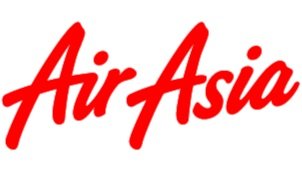AirAsia commits to guest safety with COVID-19 protocols aligned with aviation authorities
Manila, 17 May 2020 – AirAsia is in the forefront of navigating the new normal for aviation as it develops a standard of safety for COVID-19 with the government.
In a presentation to transportation authorities, AirAsia proposed safety guidelines to be adopted across the local aviation industry. These proposed guidelines detail airport and airline responsibilities whenever operating flights, including commercial, repatriation and cargo flights, to ensure precautions are taken on-ground and in-flight.
Said guidelines were presented to the Civil Aviation Authority of the Philippines (CAAP), Manila International Airport Authority (MIAA), Mactan Cebu International Airport (MCIA), and Clark International Airport Corporation (CIAC). This came after consultation with the International Civil Aviation Organization (ICAO), International Air Transport Association (IATA), and World Health Organization (WHO) on regional and international safety guidelines.
The presented measures are considered to be key inputs in the released guidelines for the aviation sector by the Department of Transportation. The issued guidelines of the government served as a core resource in training AirAsia crew and staff in managing the public health situation.
The training includes a refresher of aircraft technology, most especially on the cabin filtration system. The air inside the cabin passes through powerful High Efficiency Particulate Air (HEPA) filters, which purify the air every two to three minutes by screening almost an entire spectrum of particles.
AirAsia Philippines CEO Ricky Isla said, “As an industry leader in the Asean region, with more than 160 destinations around the world, AirAsia has always put people and their safety first and believes that it is our responsibility to address concerns of safe flying surrounding COVID-19. We have placed strict safety measures on-ground and on-board and commit to innovating more digital solutions and procedures to deliver a smoother and safer journey with us.”
These safety measures were discussed with the government in keeping with AirAsia’s tradition of being the Best Low-Cost Airline for 11 consecutive years as awarded by Skytrax from 2009 to 2019.
Safety on Ground
All passengers are mandated to wear face masks before entering the airport terminal, inside the airport vicinity, and on-board the aircraft. To prevent overcrowding, airport management will ensure that only passengers travelling that day will be allowed inside the terminal.
Health screening stations and thermal scanners will be placed at several stations including entry points and boarding gates. Social distancing will be strictly enforced using floor markings at queueing locations such as check in counters, immigration, baggage x-rays, and boarding gates. Hand sanitizers will also be provided at common areas of the terminal for hygiene and sanitation purposes.
Aircraft will undergo disinfection and deep cleaning before and after every flight
Contactless boarding procedures will also be implemented. Passengers are encouraged to use e-boarding passes to minimize face-to-face interactions.
Airline staff are required to wear their Personal Protective Equipment (PPE) while on-duty, inside the airport vicinity, and on-board the aircraft. Likewise, airport personnel are to wear their PPEs while on duty, either inside the airport vicinity or on-board the aircraft.
The 2-hour cleaning process is in accordance with the Airbus Aircraft Maintenance Manual (AMM) and in compliance with instructions from health authorities
Daily disinfection will take place especially in crowded places and high-touch surfaces such as check-in counter tops, counter computers and peripherals, wheelchairs, trolleys, ATMs, vending machines, kiosks, lift buttons, x-ray machines and trays, buggies, public seating areas, and door handles, among others.
Safety on-board
All aircraft undergo deep cleaning and sanitation to control or neutralize infectious elements, thus minimizing the risk of spreading any virus. Cabin disinfection takes place before and after each flight.
Ground crew replacing the HEPA filter of the aircraft
In addition, all aircraft are equipped with air filtration systems that rule out airborne transmission of contaminants, thus reducing the chances of contracting viruses. The air inside the cabin passes through powerful High Efficiency Particulate Air (HEPA) filters. These filters are similar to those equipped in hospital operating rooms where airborne infection is much lower compared to normal environments.
Ground and cabin crew have been adequately trained in identifying and handling passengers showing symptoms, to be endorsed to authorities. Protocols for in-flight emergencies, which include assigning special seats and lavatory for use of ill passengers, are also in place.
Safety Upon Arrival
Upon arrival, social distancing measures will still be in place. Floor markings near the conveyor belt will serve as a guide. Hand sanitizers at key areas will also be in place.
A mandatory quarantine period for all arriving passengers will be undertaken as per regulatory requirements. Passengers who are ill or suspected ill will be taken care of by qualified personnel.
Meanwhile, transit passengers will not be allowed to leave the airport in coordination with concerned government partners.
All these safety measures will be conveyed through various channels, including all airport digital displays or standees. All concerned staff and passengers will be briefed on the said guidelines to heighten awareness and implementation.



